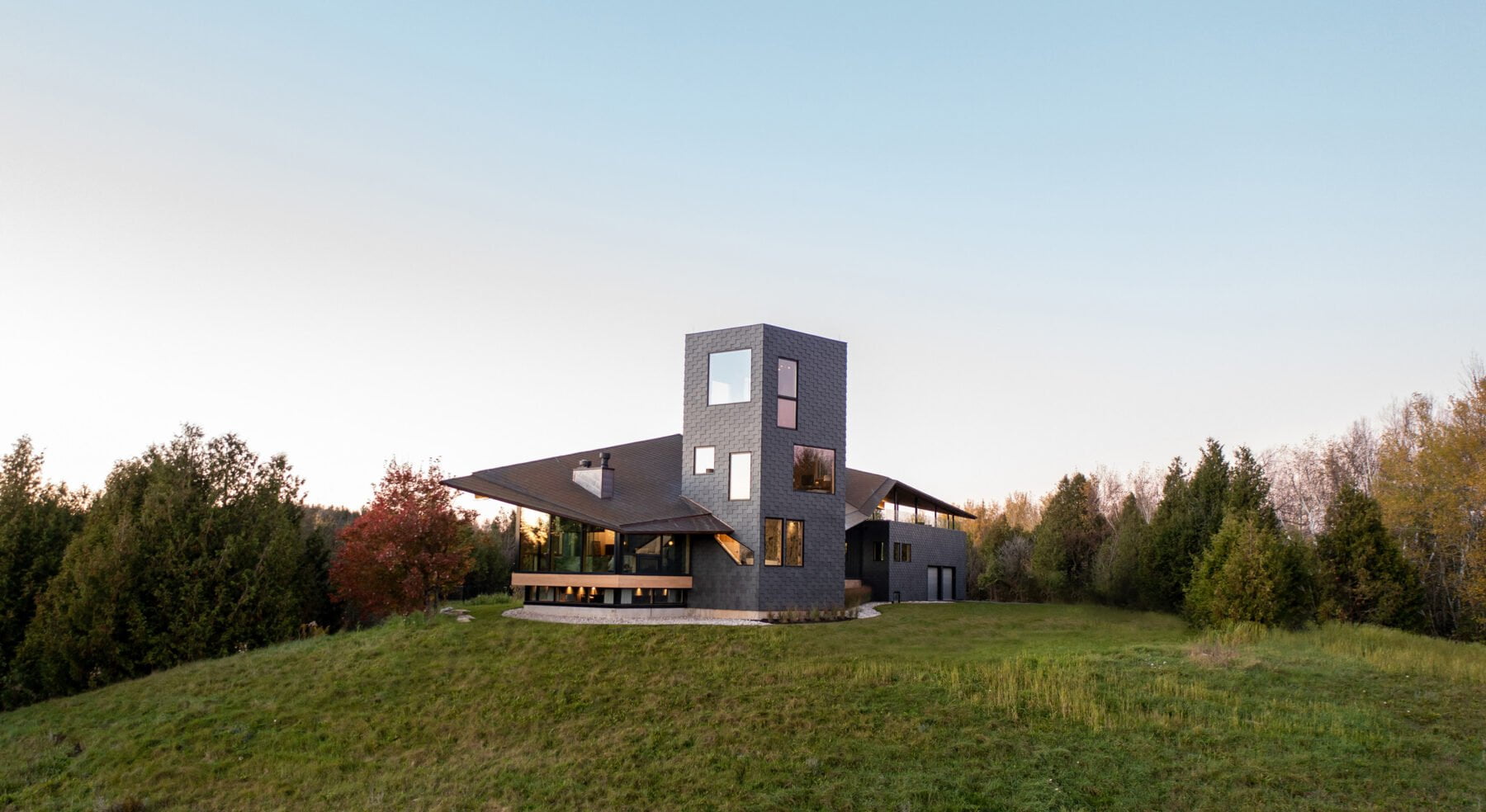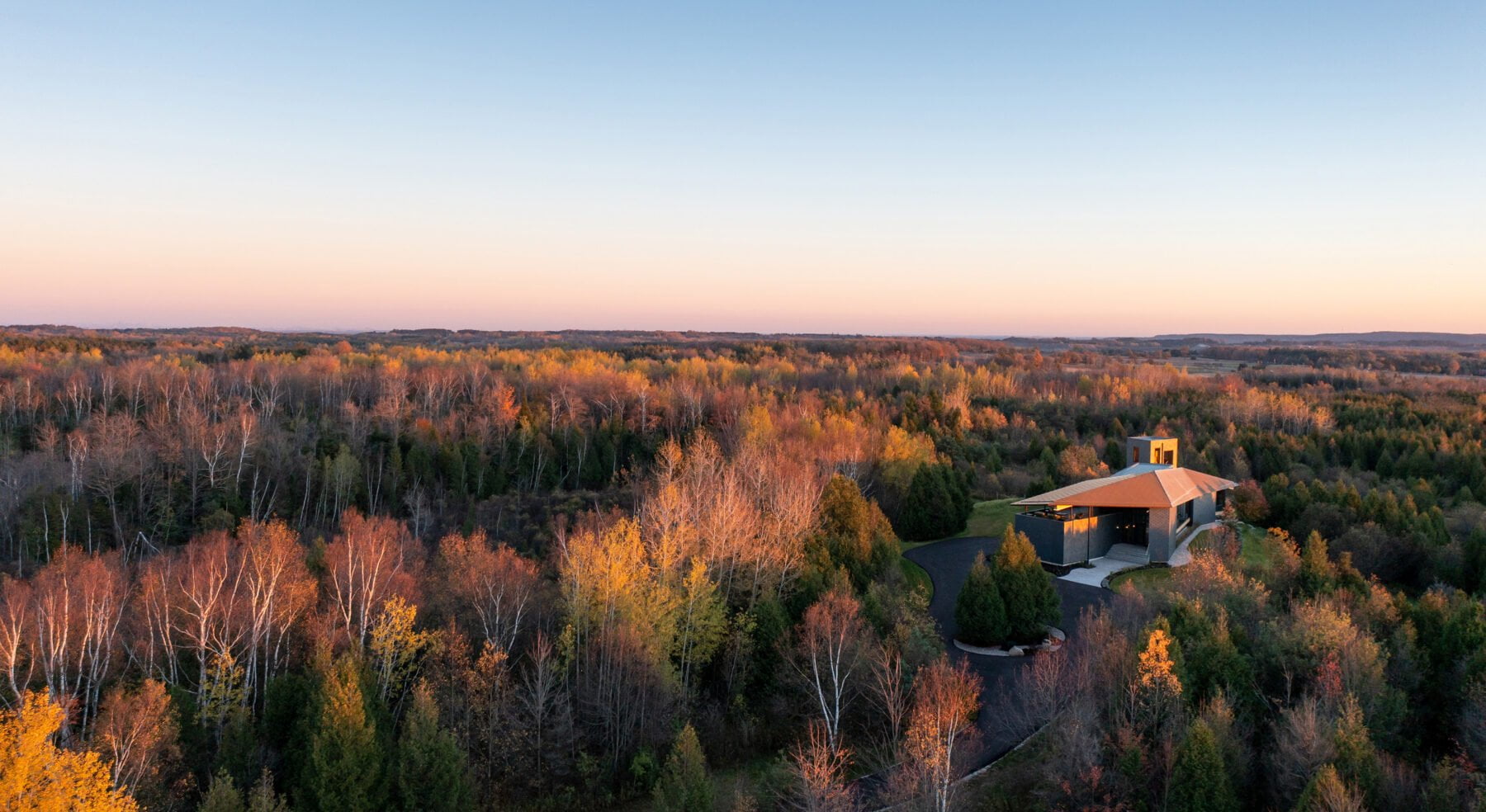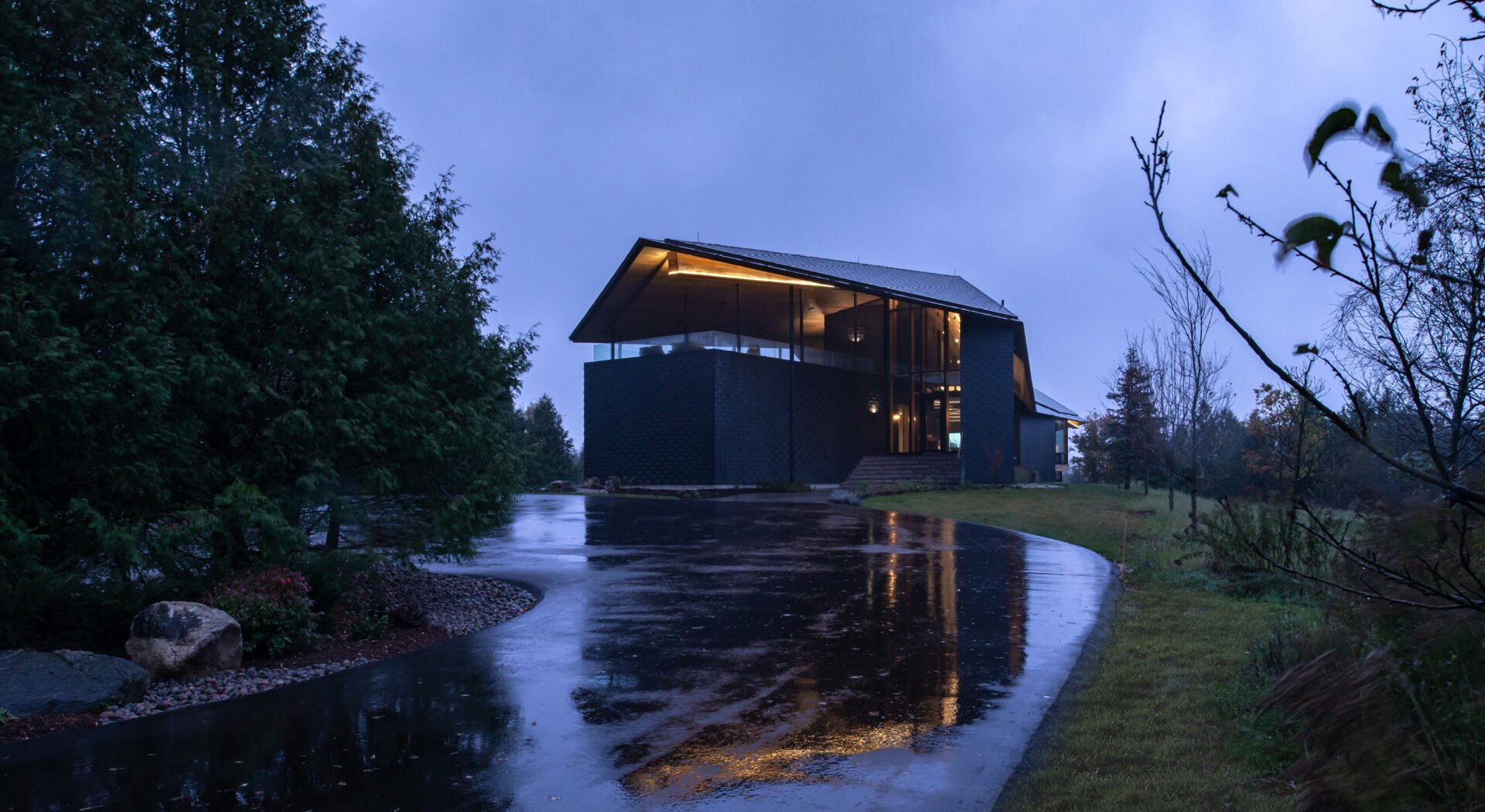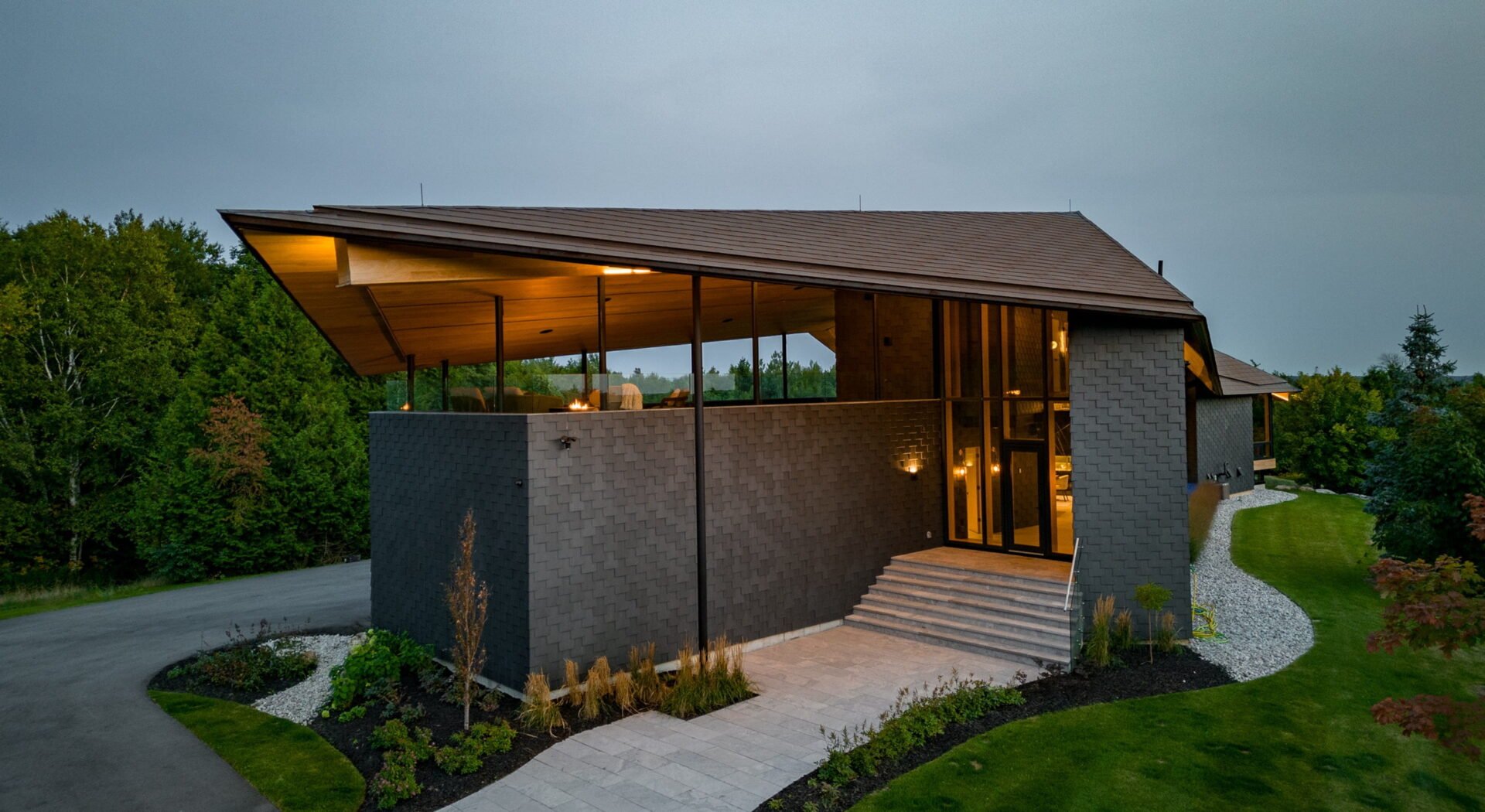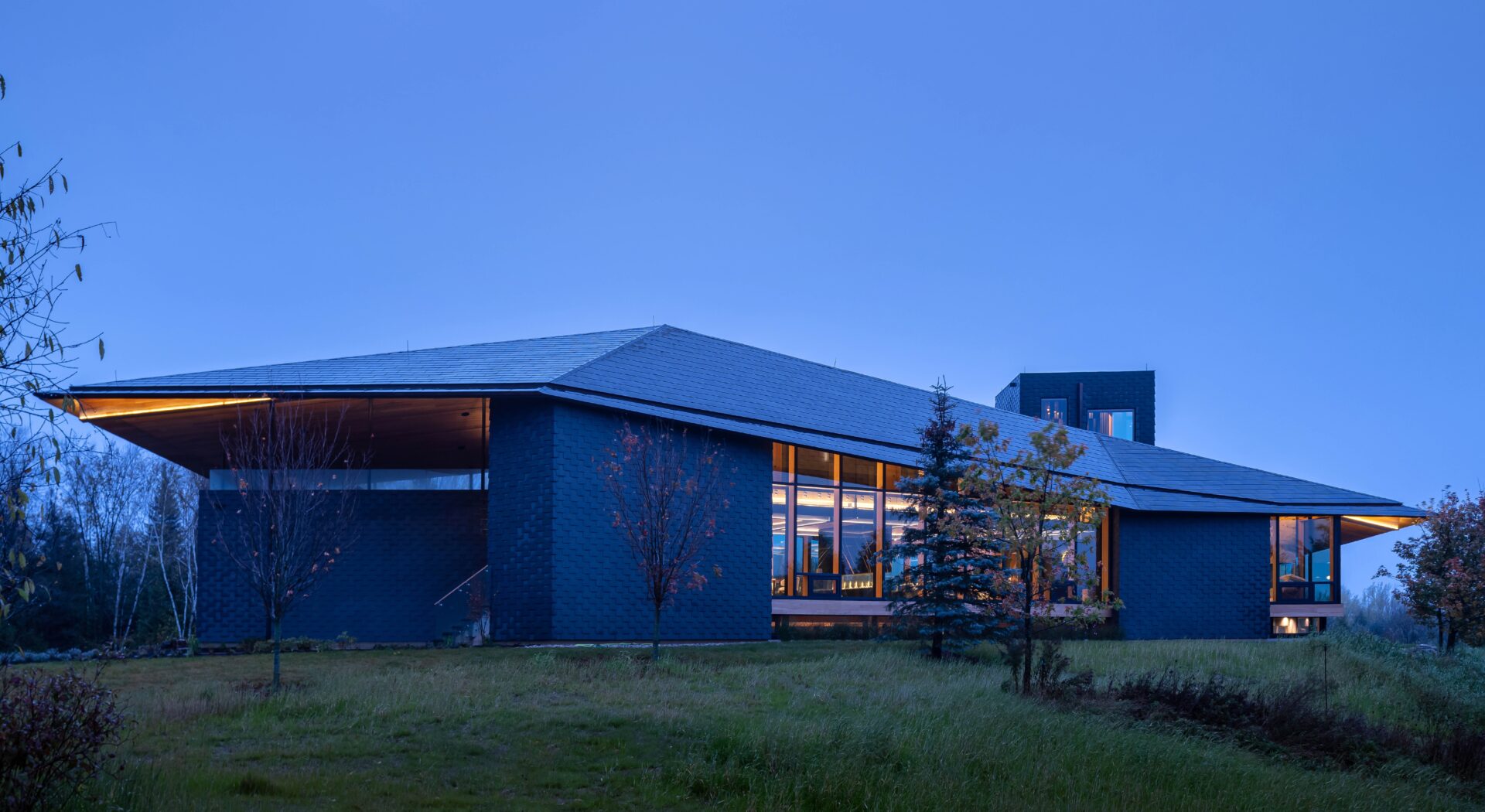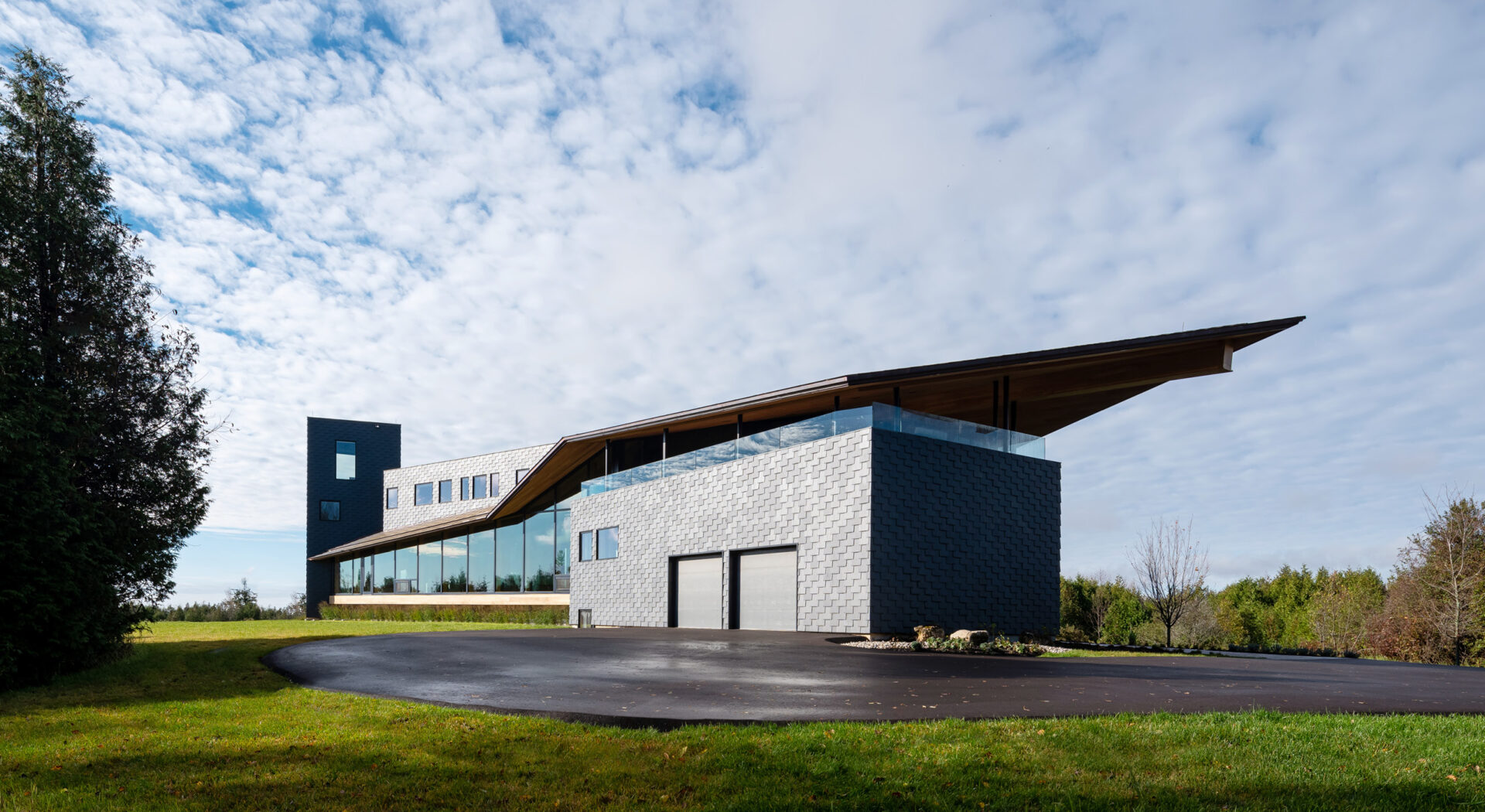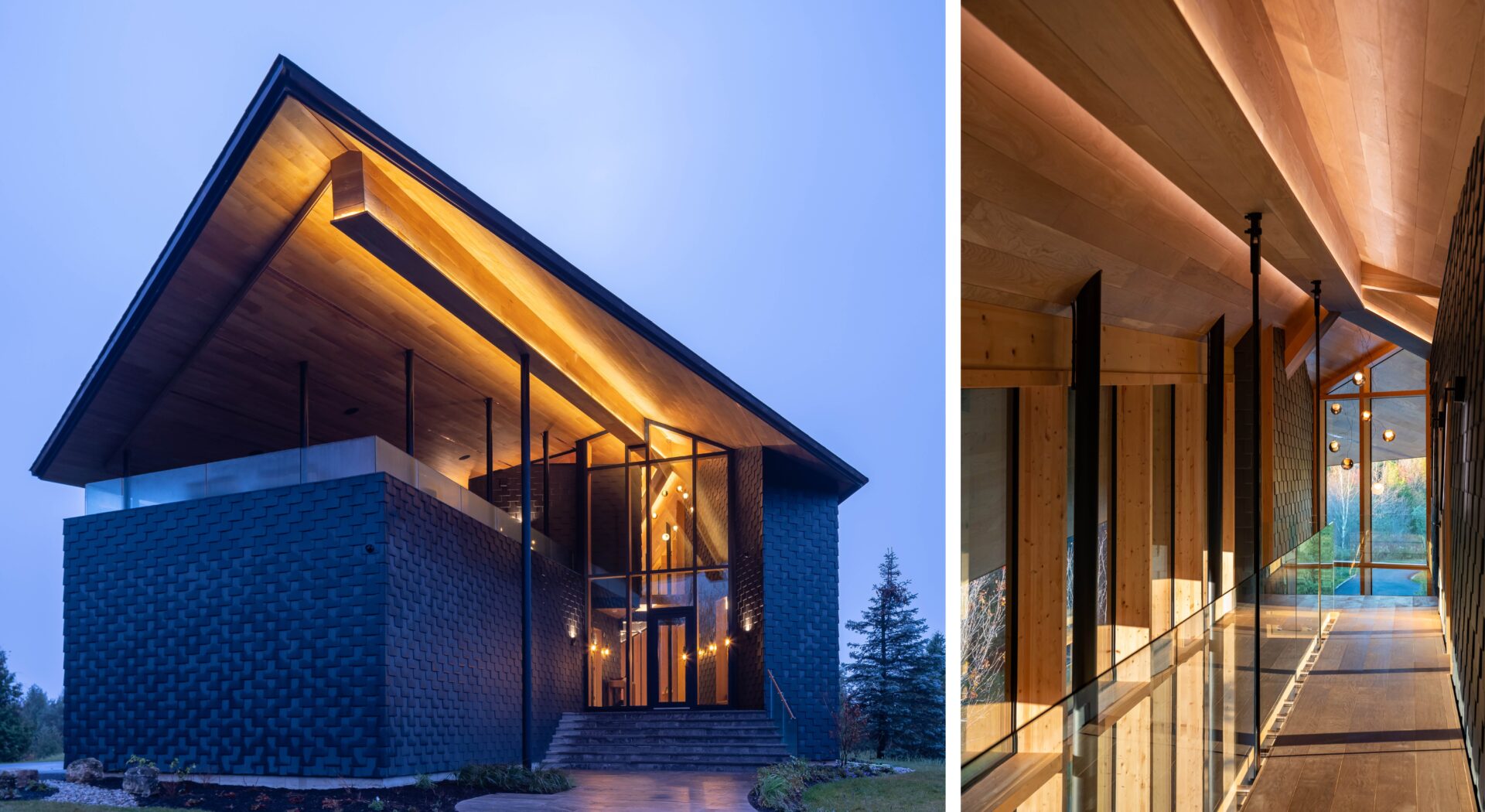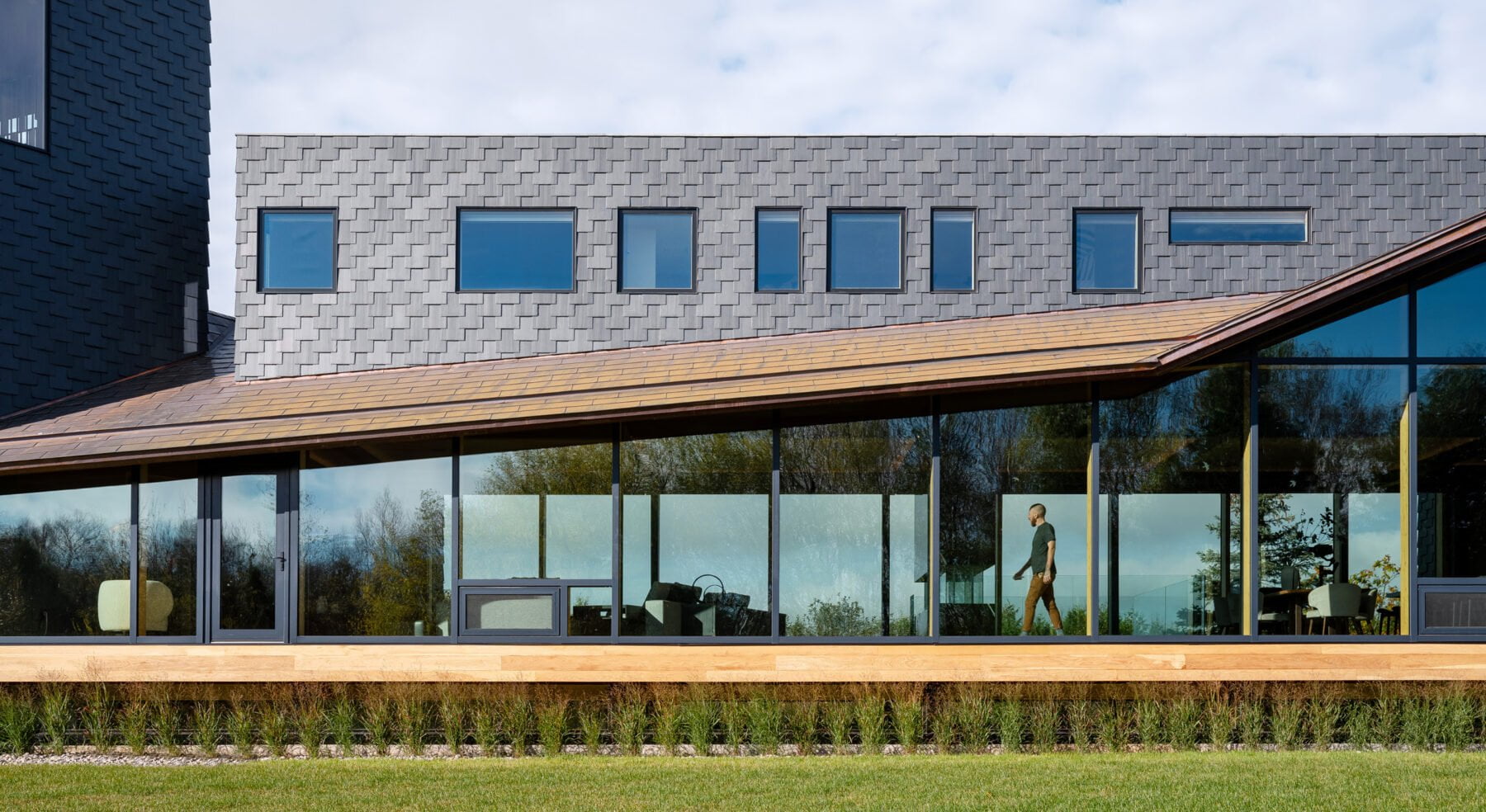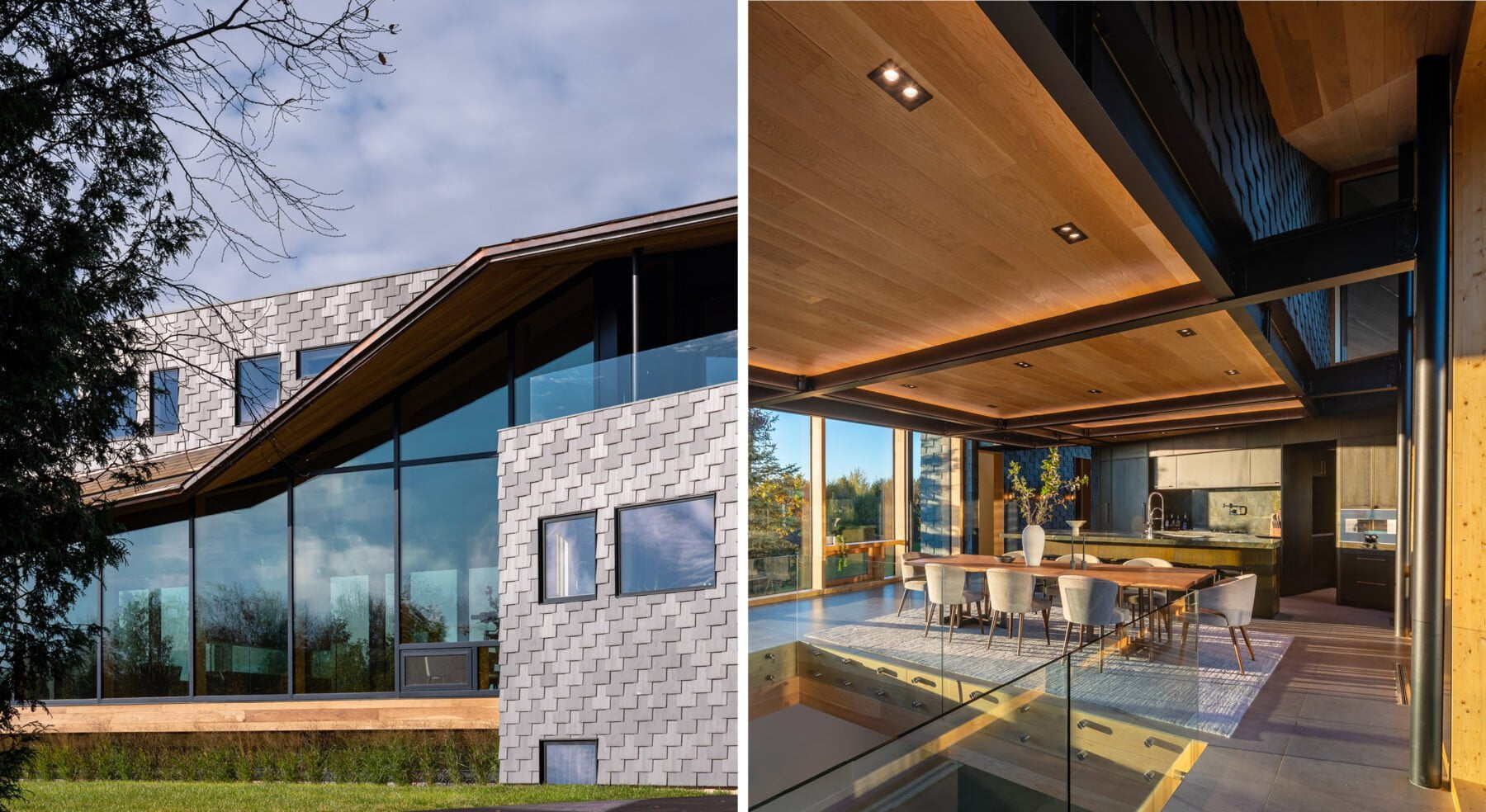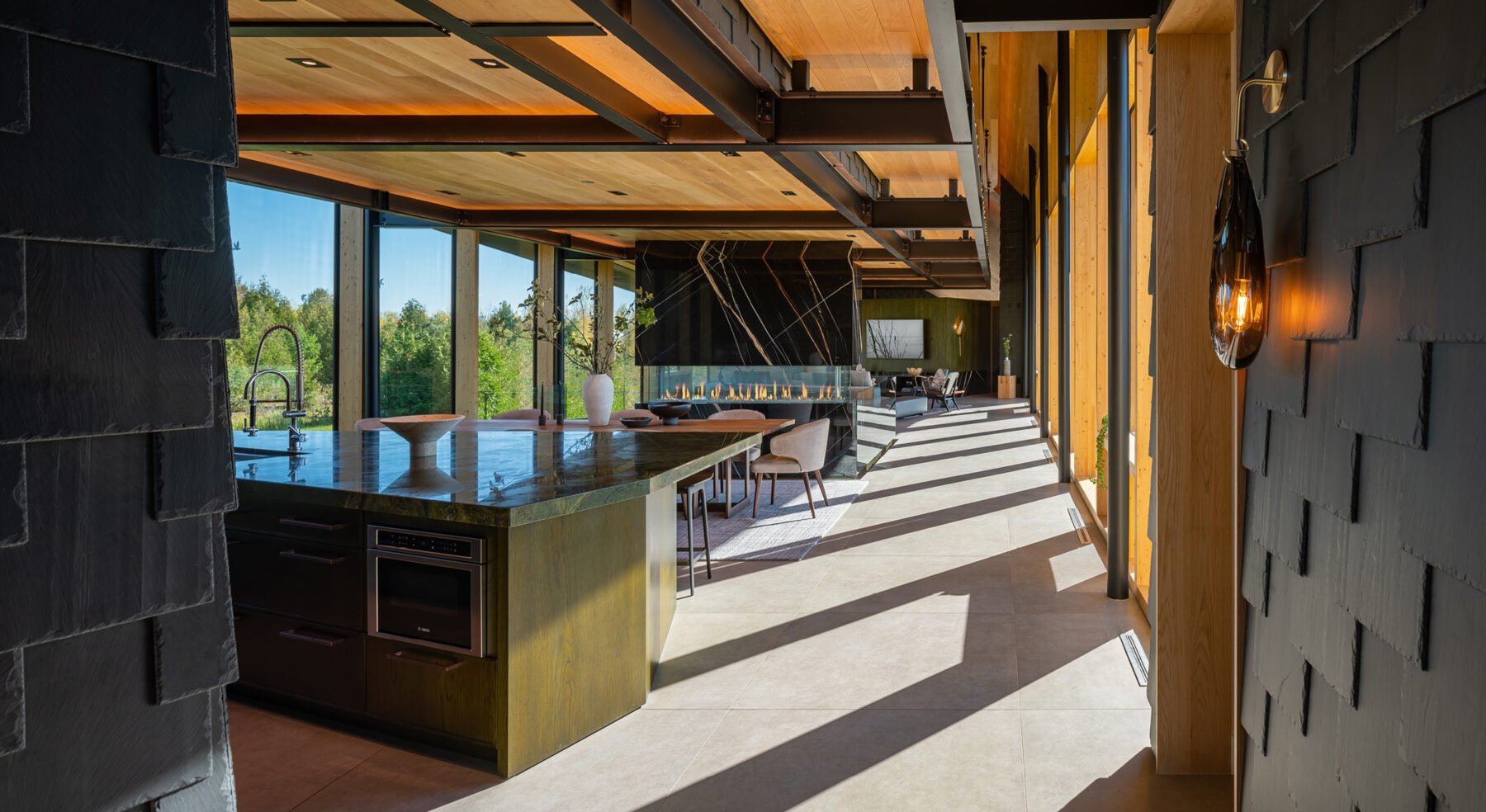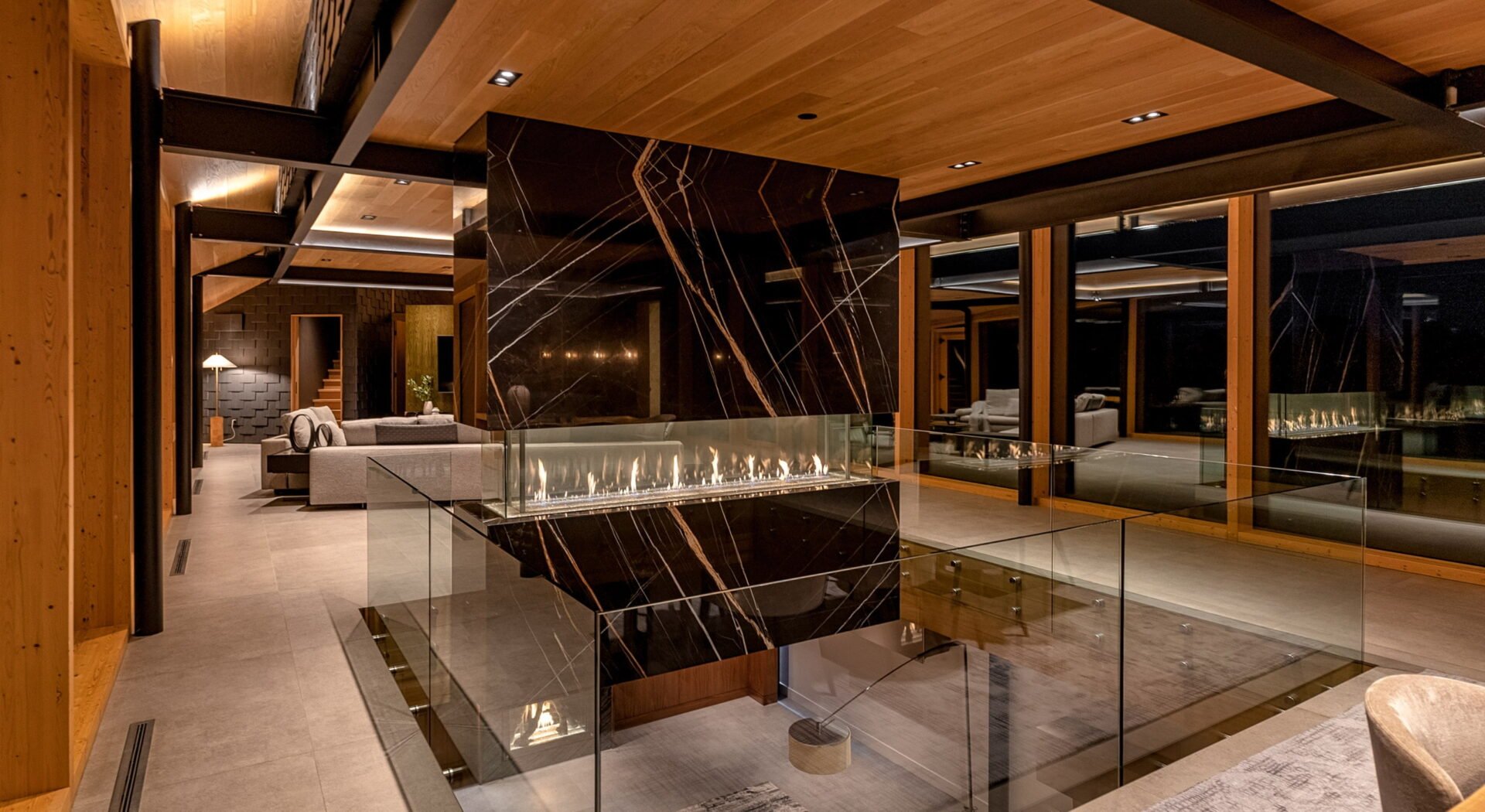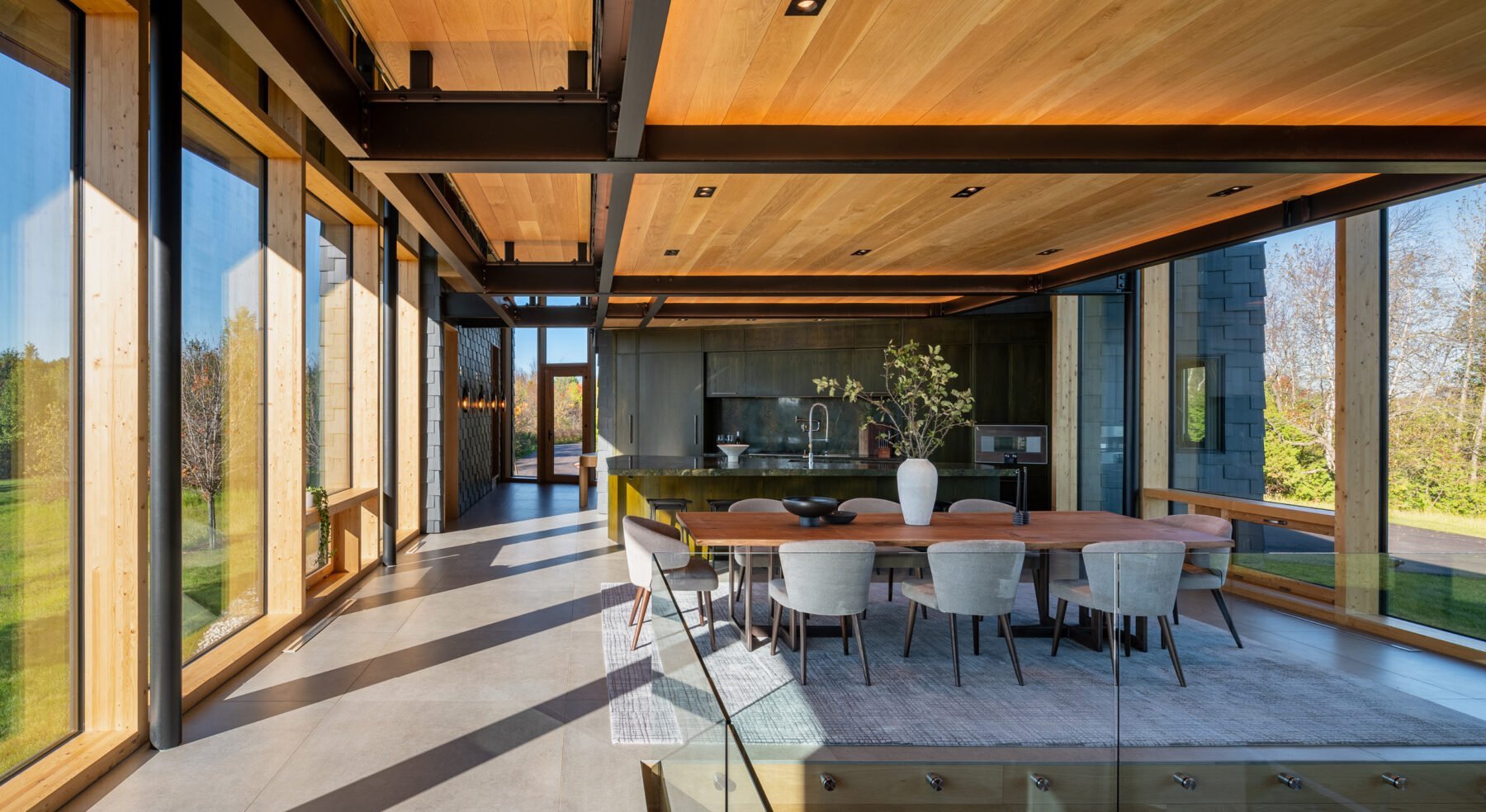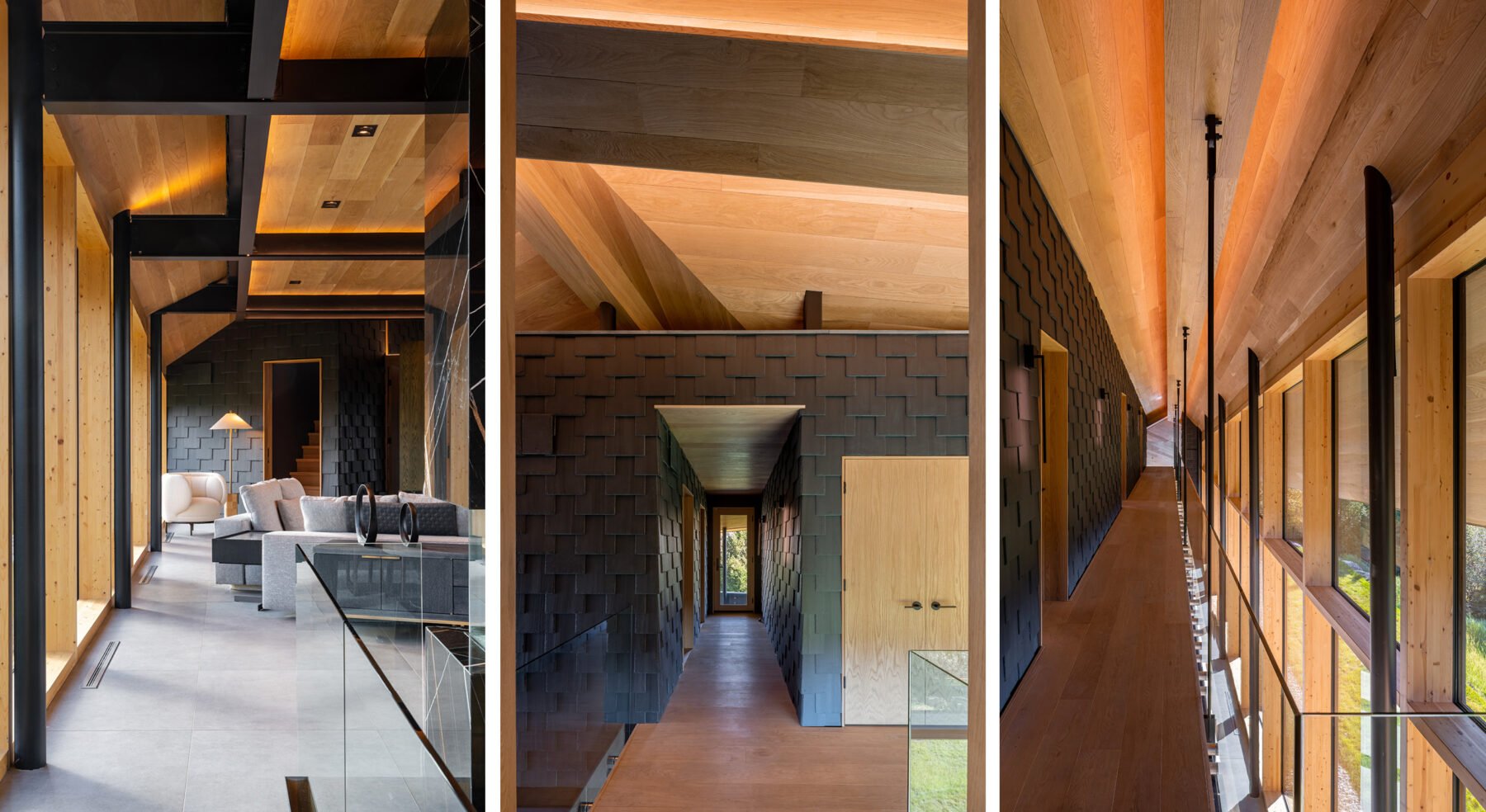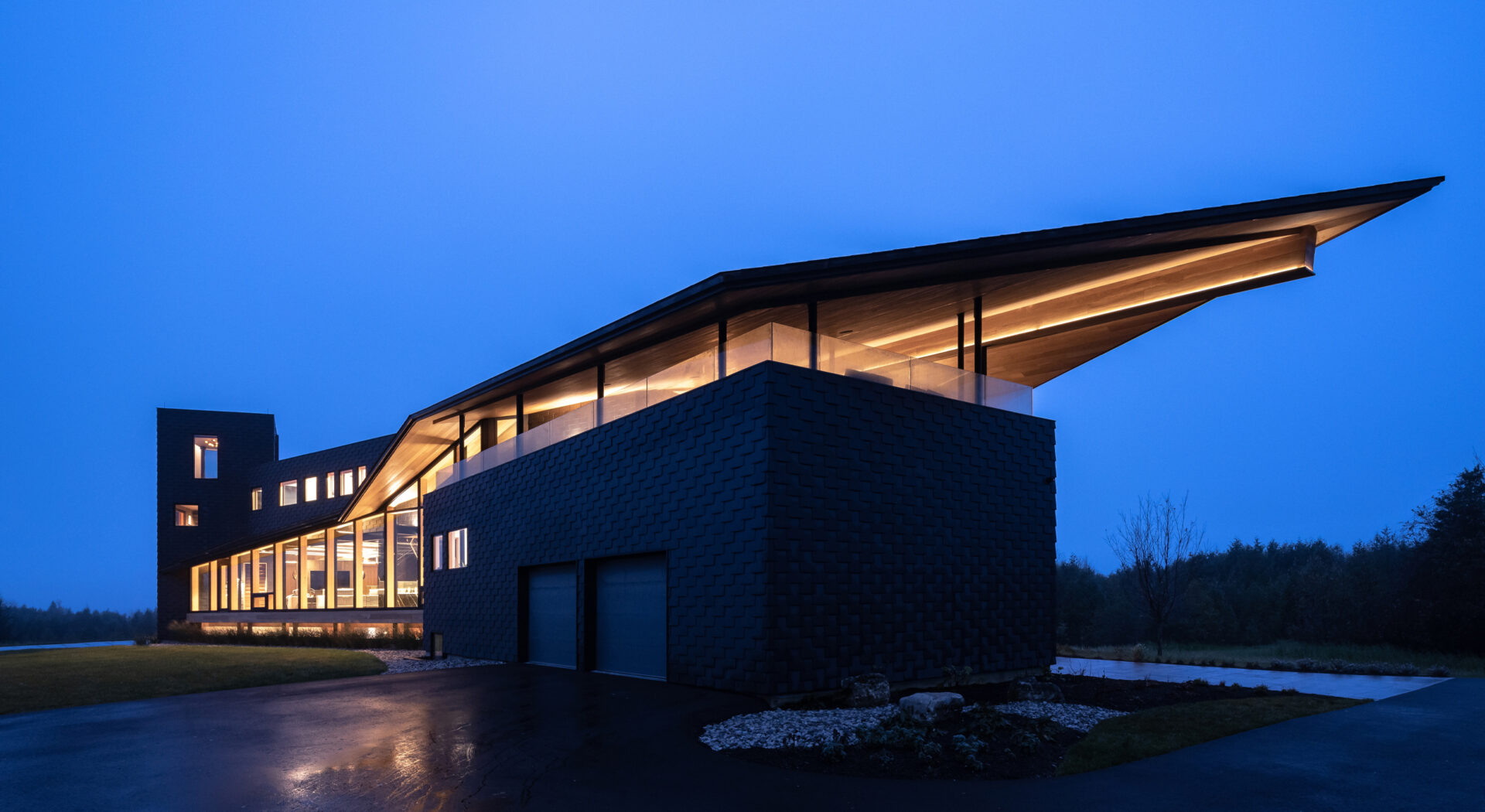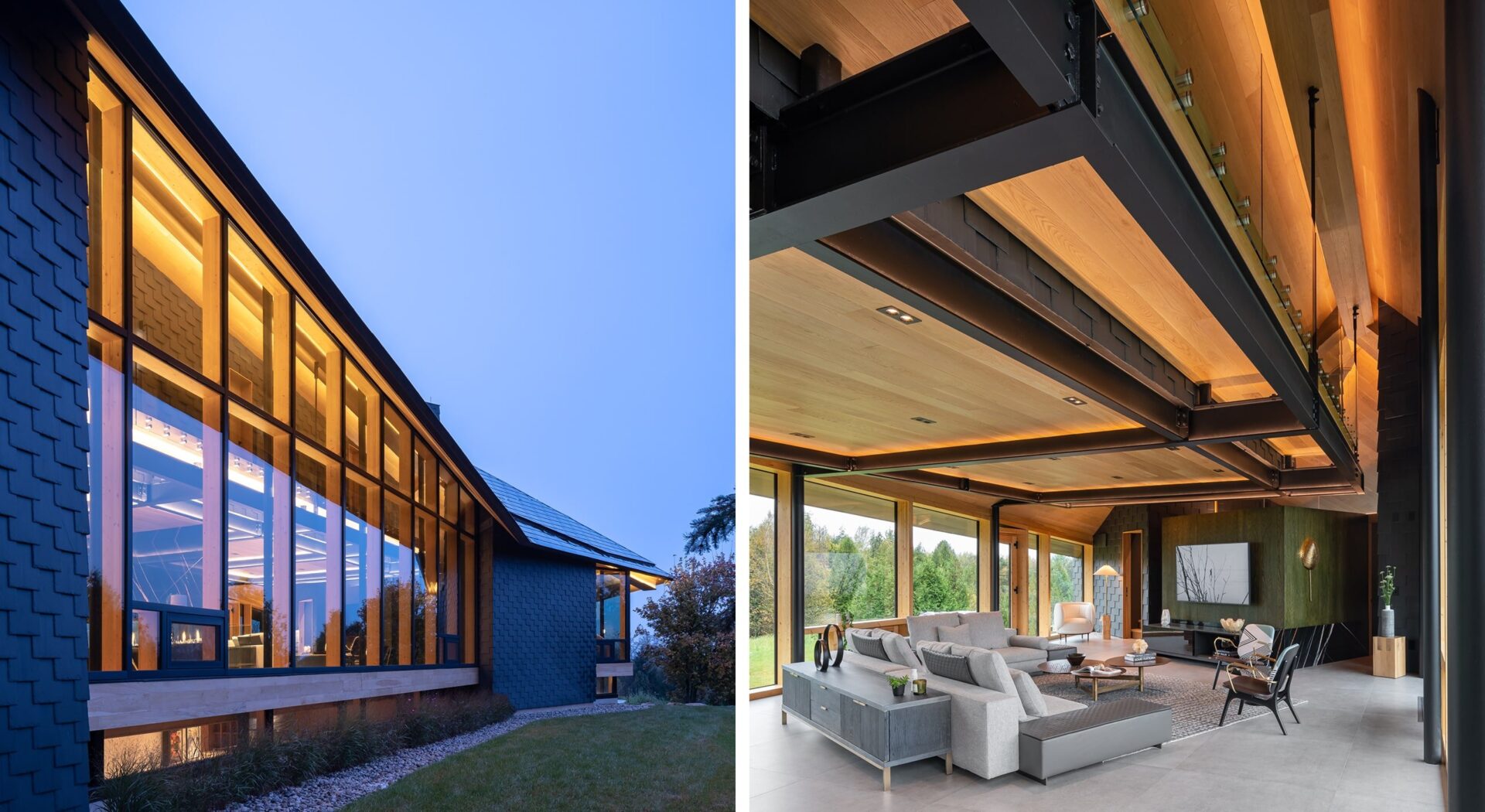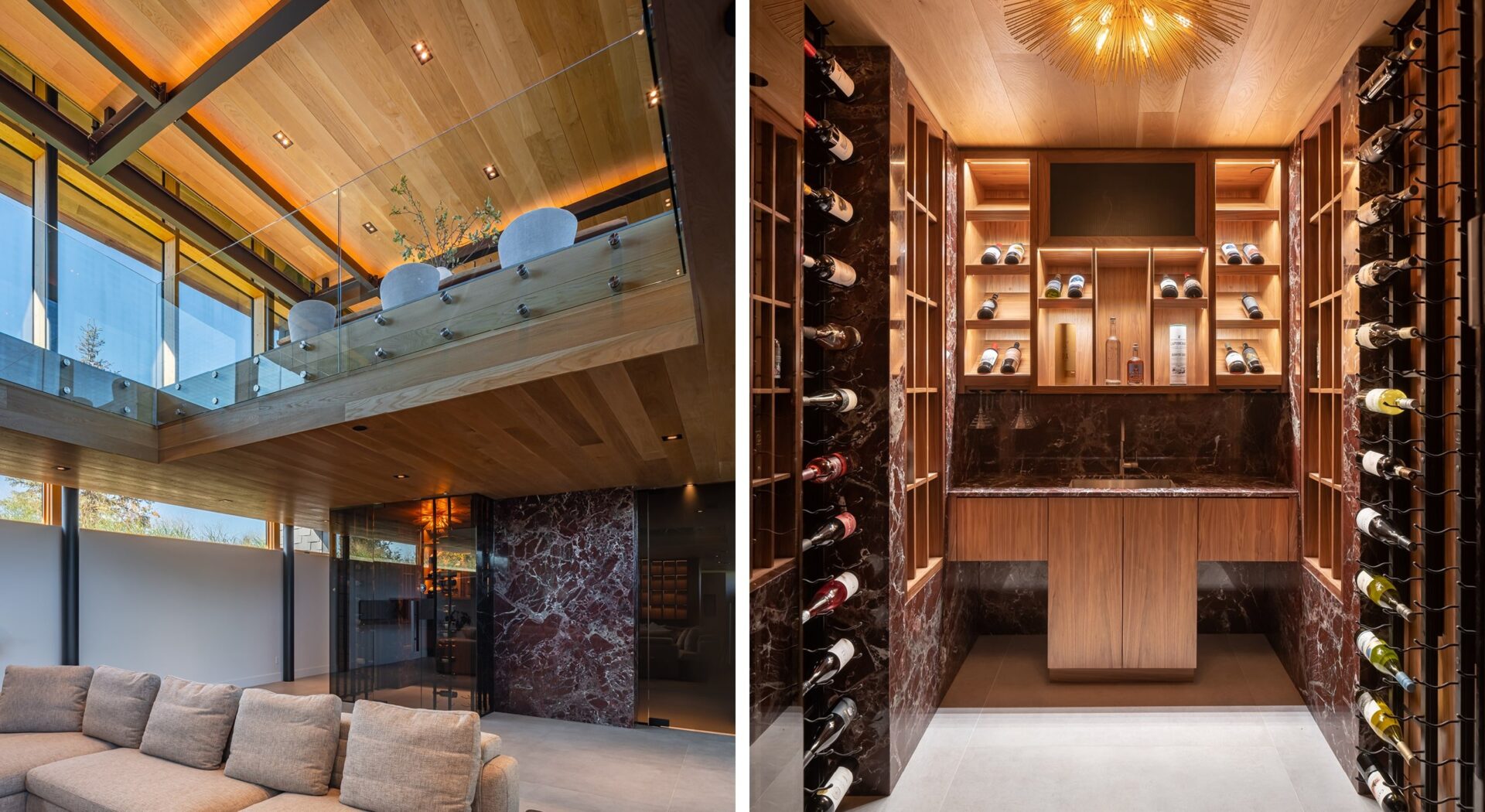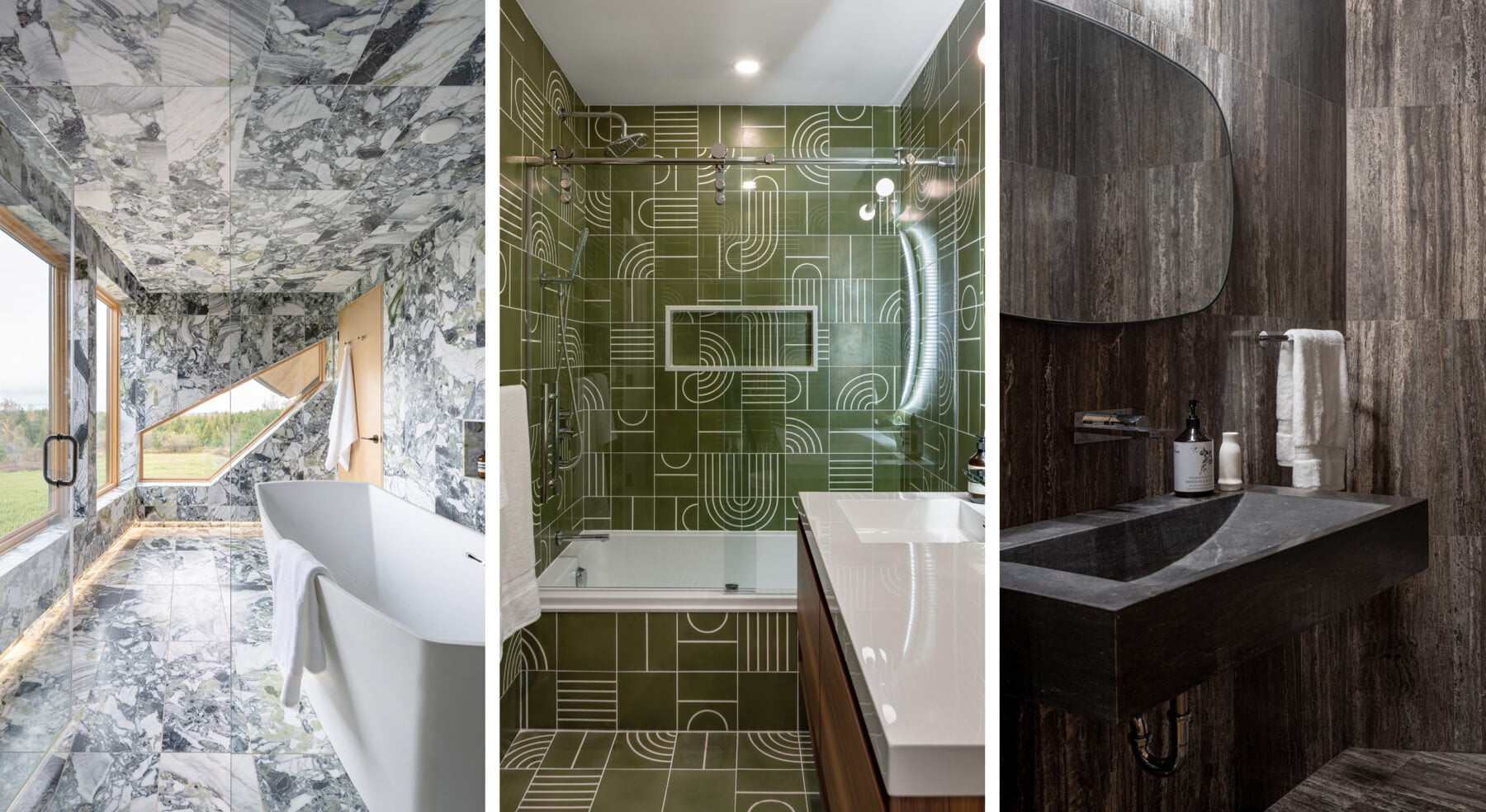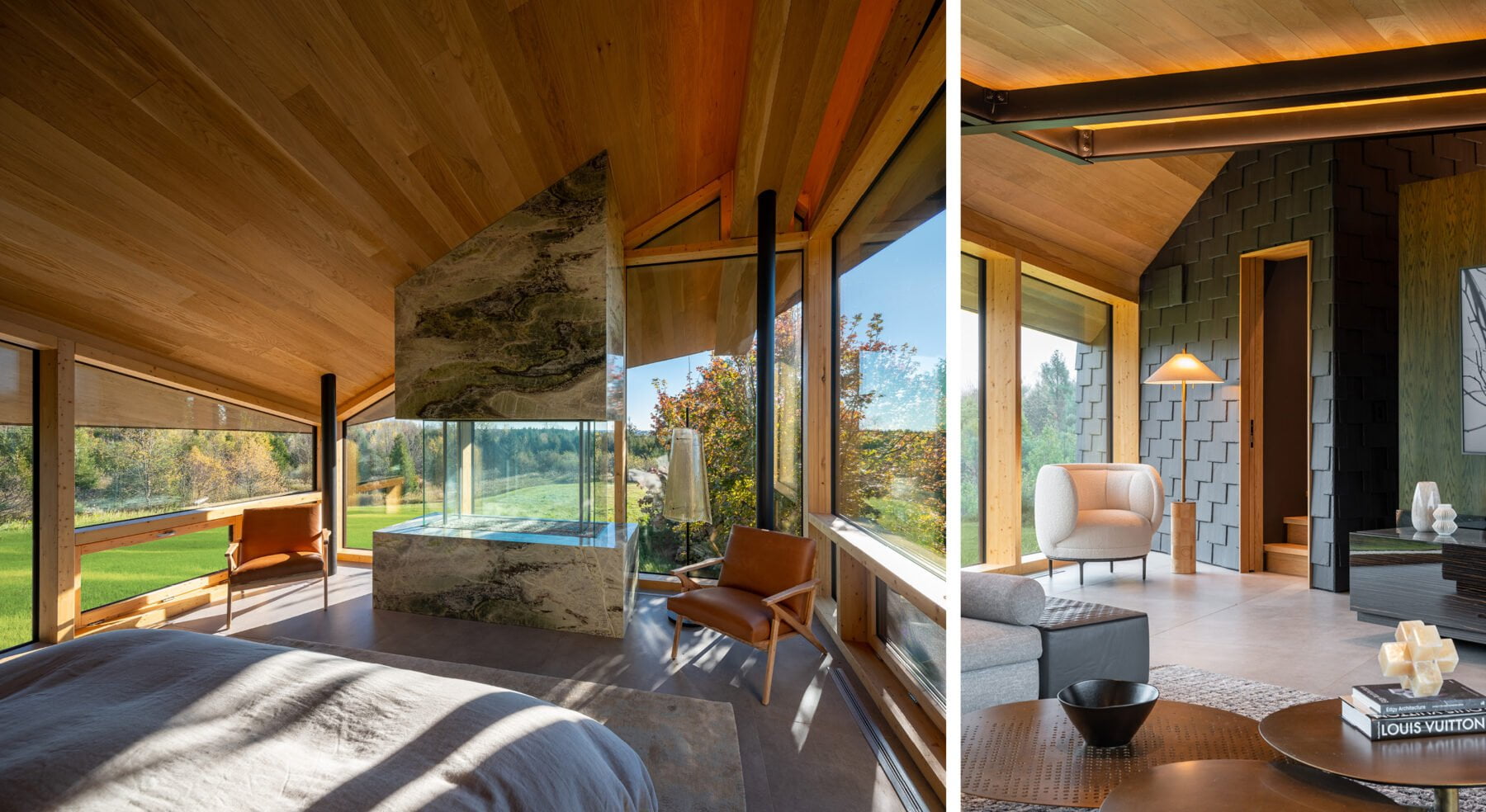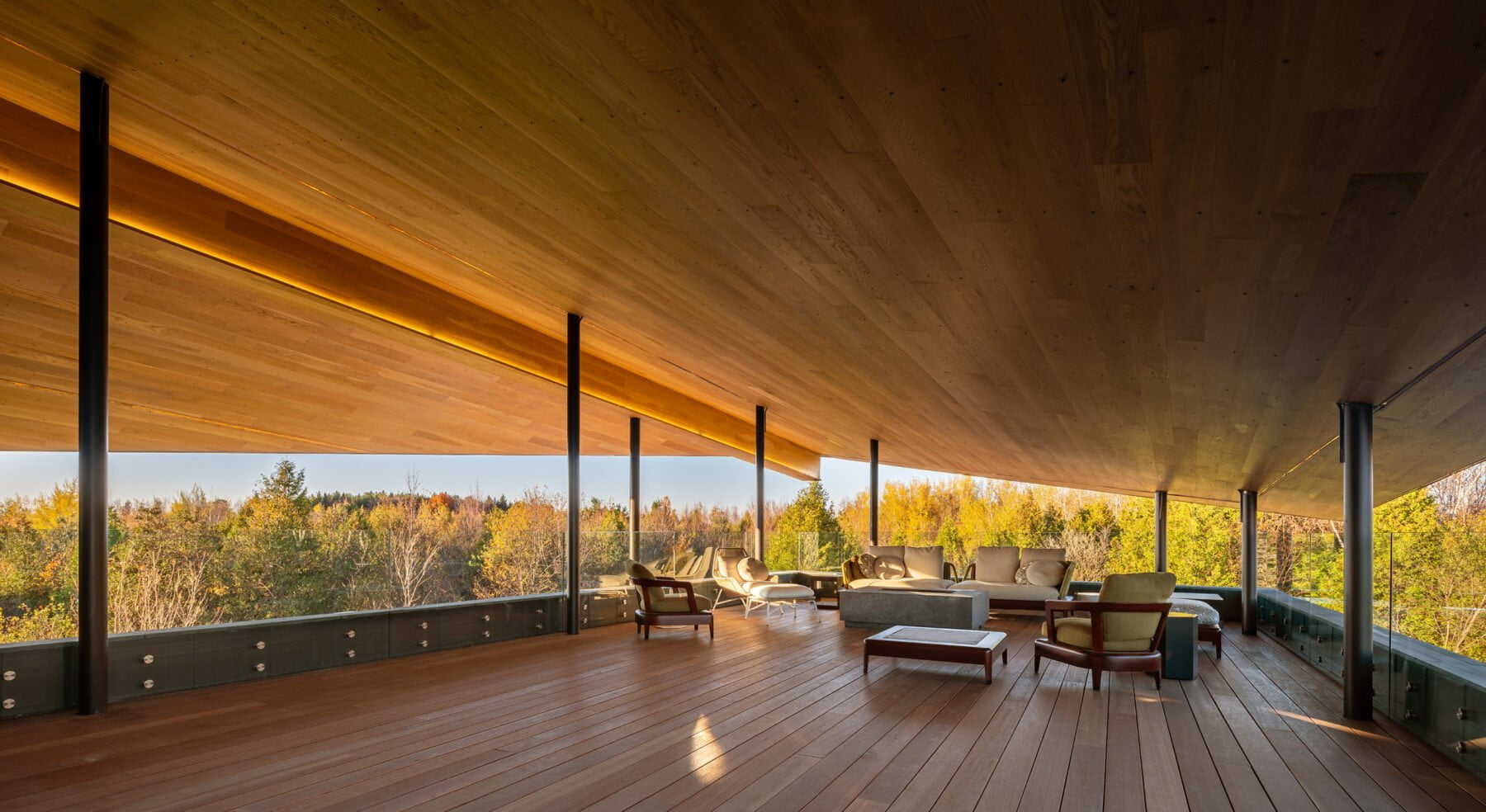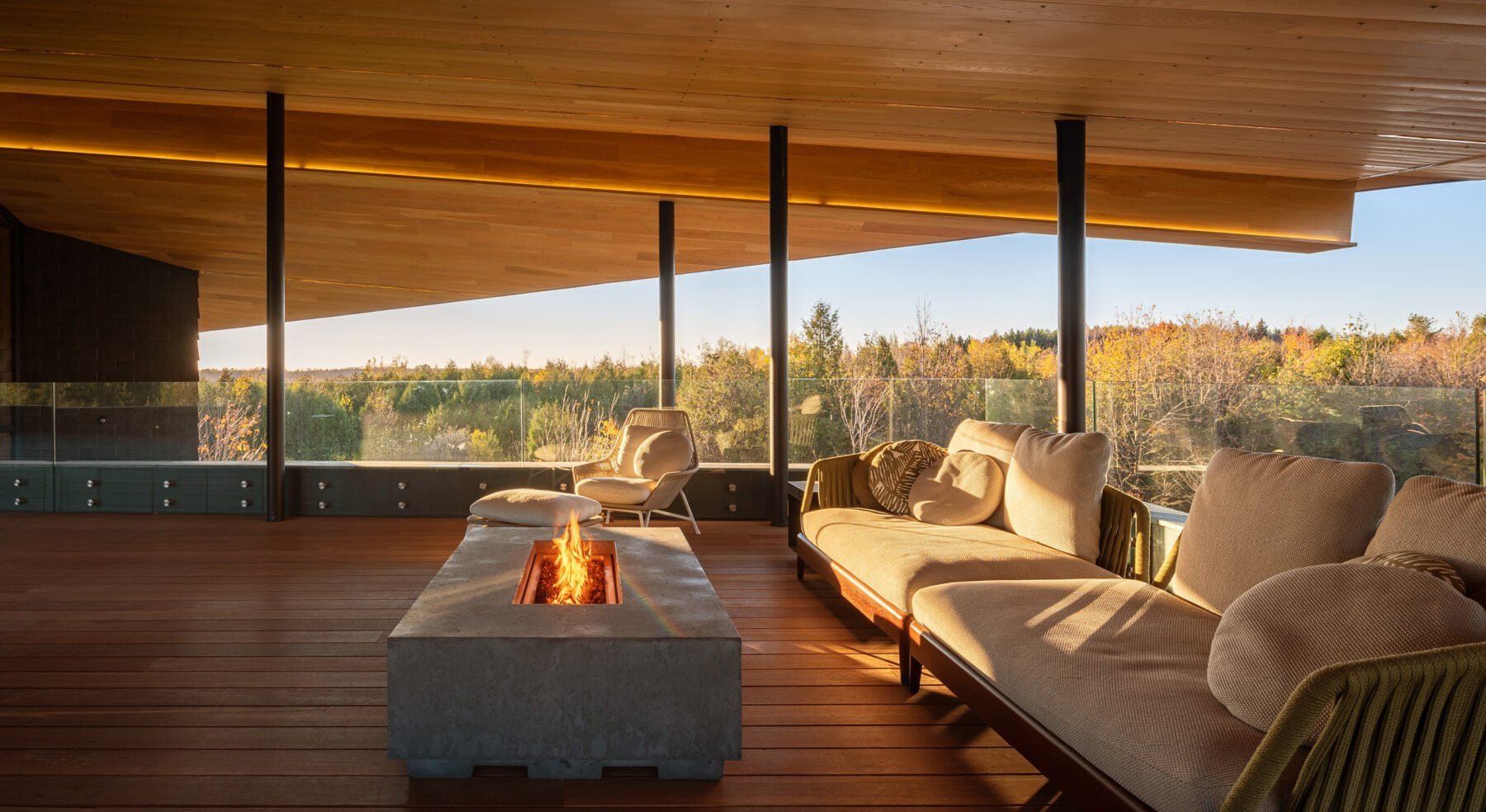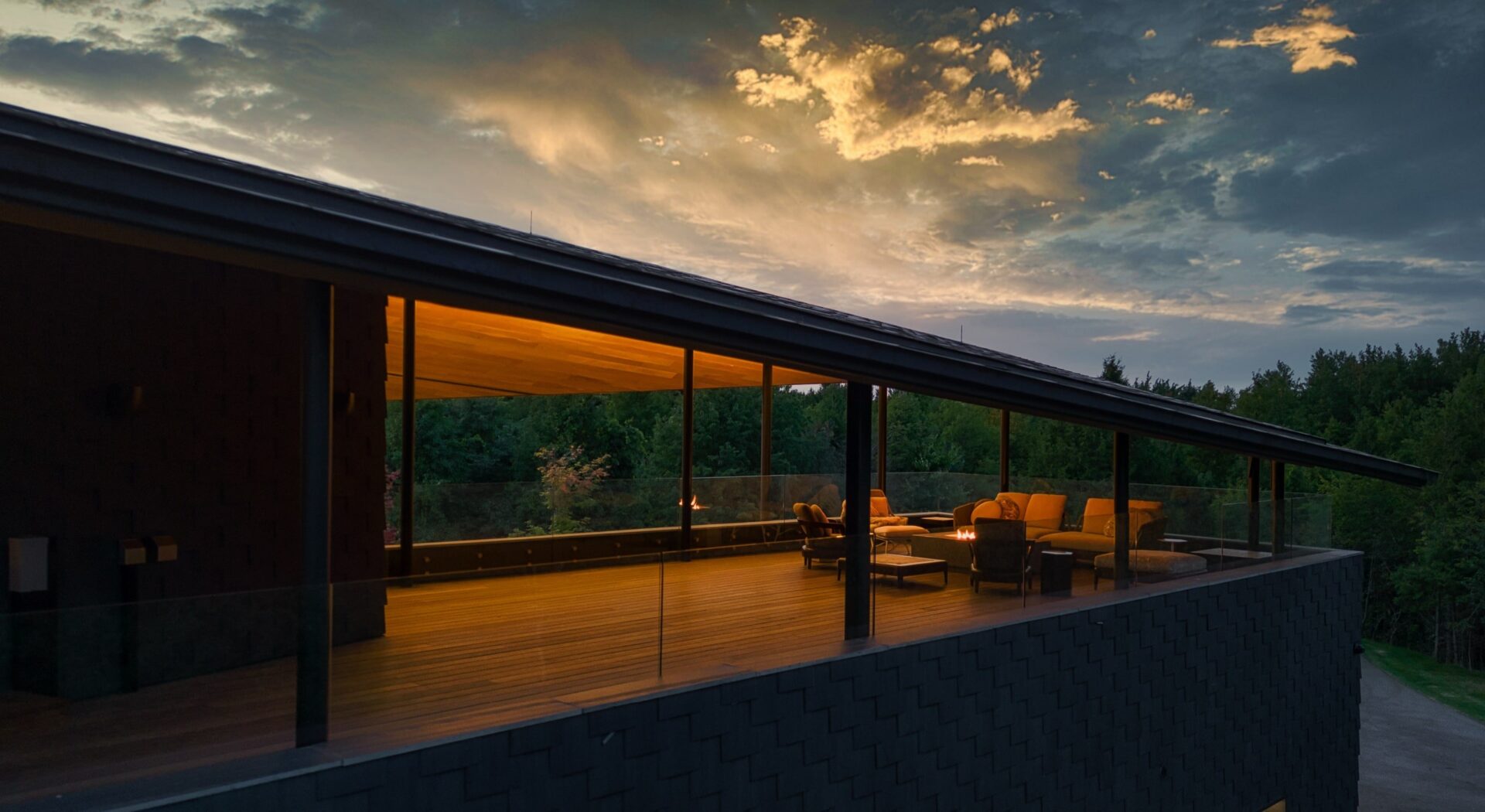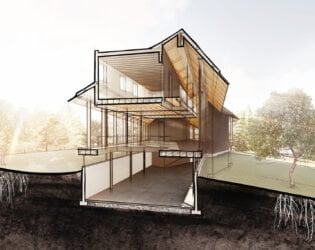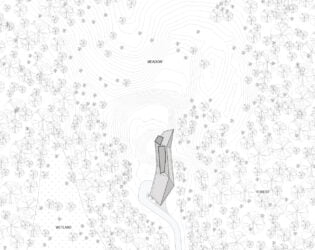Forest Retreat
Winner - AIA New York Interiors Residential Review
Winner - Canadian Wood Council Design and Building Awards
Honourable Mention - AIA Canada Society 2022 Design Awards
Finalist - Architizer A+Awards
Nomination - ArchDaily Building of the Year 2025
Project details
A Family Retreat in Rural Ontario
This home’s clients live abroad but sought a Canadian homestead for their large family and guests. During summer and winter holidays, the parents wanted their children immersed in an Ontario landscape like the one in which they were raised. They asked for a generous home to allow young teenagers, extended family (and large dogs) to be comfortable in a remote area for long stays, and that would encourage activities like hiking and snowshoeing.
Historically, the Canadian identity has been defined by our relationship to the land. Fulfilling the client’s mandate, the home honours that emotional connection through visual and material harmonization with its surroundings, but moreover, through responsible material sourcing and site adaptation, as well as energy-saving systems.
A key contribution of the project to the area is that it preserves almost the entirety of the landscape that it occupies: an existing rocky area overlooking a wildflower meadow, which avoided cutting trees. Almost all of the natural habitat of the 100-acre property was preserved, including its wetlands.
Under one roof
A key objective of the design was to achieve a contemporary approach to warmth and the avoidance of modernist box-like forms. The continuous space of the home, with only bedrooms and bathrooms closed off, is a layout that supports the family’s closeness. The family and parents’ areas are on the main level. The kids’ bedrooms form a single slate-clad volume, suspended 12 meters above the main floor by the ridge beam and accessed by a catwalk.
The most distinctive aspect of the design is the long, copper-clad, tent-like roof, which follows the site’s topography. A primary technical challenge was the roof’s structure, which, despite its 60-meter length, was designed and engineered to seem light. At the entry side of the house, the roof lifts like a bird’s wing off the garage volume beneath, sheltering an outdoor terrace.
The roof and its oak-clad ridge beam choreograph the meandering circulation path through the home’s interior, ultimately extending a view toward the forest.
A Contemporary Approach to Warmth and Closeness
This project enabled a benchmark for a finer, more considered level of craft and materiality. The development of this home’s design reinterprets the client’s mandate for “rusticity” by foregrounding the “mark of the hand” as opposed to contriving to mimic an aesthetic that emerges from a pre-machine era. Contemporary construction is very much entwined with heavy technology and mass-produced components, yet, this project shows how “human craft” can still be expressed.
The home celebrates the “mark of the hand” by incorporating a significant use of exposed steel fittings fabricated by local tradespeople, and custom-made panels for walls and ceilings by local woodworkers, including the echo of traditional slate roofing patterns — here used for walls. The intention here is not to avoid modern building methods as, for example, some heavy timber post-and-beam homes might do. The intention was to bring soulfulness to the home by thinking through and resolving details in person and by hand, and not merely on a computer screen.
Sustainability
We’ve pursued sustainability on several fronts with this project.
One key approach is habitat preservation. The home was constructed on an already cleared hilltop site, overlooking 100 acres of forests, meadows, and wetlands. This not only avoids cutting down trees to build the house, but it makes the homeowners the custodians of extensive existing natural habitats that will shelter birds and other wildlife.
The second main approach to sustainability is to reduce the home’s carbon footprint by maximizing its lifespan, primarily through the use of highly durable materials, robust construction methods, attractive custom craftsmanship, and beautiful yet practical design. Hopefully, the practical yet simple beauty of the home will ensure that it will be cherished for many years to come, even if it is sold. A few details that support this intention include exposed steel fittings fabricated by local tradespeople and custom-made panels for walls and ceilings by local woodworkers (some of which echo the slate tiles used on the exterior). If the home is ever remodelled or even demolished, many of these materials are worthy of being reused.
The other half of the lifespan equation is the use of durable materials that will preserve the envelope with minimal to no maintenance. Canadian slate and sustainably harvested Canadian white oak were the main materials used. (The fact that they are also local reduces the carbon footprint of transportation as well.)
The home also uses several techniques to reduce energy consumption. The roof is very well insulated, and the glass walls are triple-pane, which vastly reduces the energy loss. The deep overhang of the roof also reduces passive solar gain in summer. The home is heated and cooled using a geothermal heat pump. Because it is powered by electricity, a heat pump has a much lower carbon footprint than the most popular heating method of natural gas, a fossil fuel (Ontario’s electrical grid is currently at about 90% GHG-free). Geothermal heat pumps can not only operate at much lower temperatures than air-source heat pumps but also use less electricity.
The fixtures and septic system are high-efficiency, ensuring responsible use of water.

